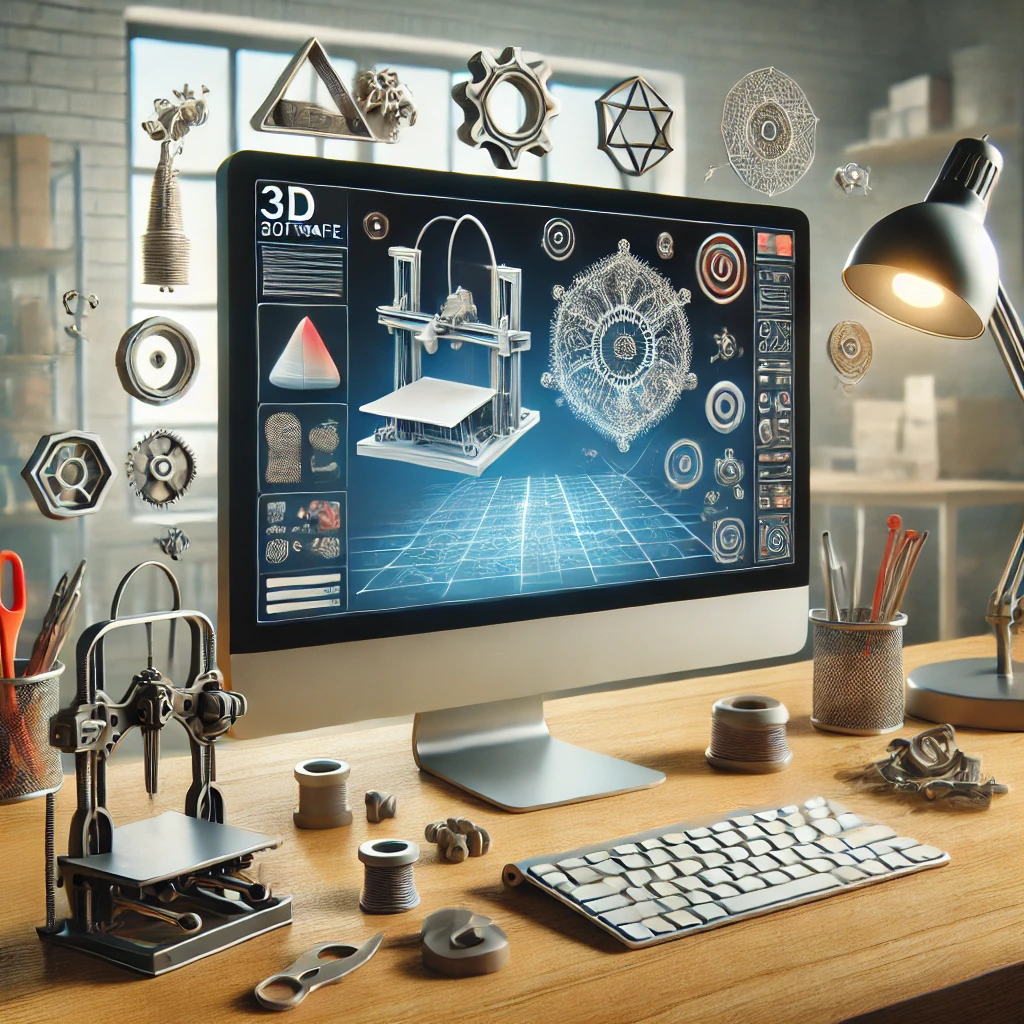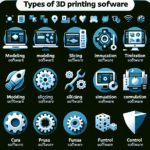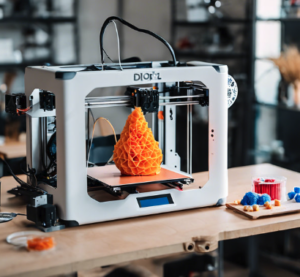Mastering 3D Printing Software: The Key to Unlocking Your Creative Potential

Mastering 3D Printing Software: The Key to Unlocking Your Creative Potential
The world of 3D printing has revolutionized many industries, from manufacturing and healthcare to automotive and aerospace. However, the key to unlocking the full potential of 3D printing lies not just in the hardware but in the software that drives it. Whether you’re an amateur hobbyist, a professional designer, or a large-scale manufacturer, mastering 3D printing software is essential for producing high-quality, efficient, and cost-effective prints. As we move further into the 2020s, the role of software in 3D printing is expanding, driven by technological innovations that make the process faster, smarter, and more accessible.
In this article, we will explore the significance of mastering 3D printing software, the types of software available, and the technological advancements shaping the future of 3D printing. We will also dive deep into key innovations that are transforming 3D printing and how software enables users to unlock their creative potential.
The Importance of 3D Printing Software
At its core, 3D printing is the process of turning a digital model into a physical object. The digital model is typically created using 3D modeling software or sourced from a pre-existing design. However, once the model is ready, it must be converted into a set of instructions that the 3D printer can follow. This is where 3D printing software plays a crucial role.
Whether you are using Fused Deposition Modeling (FDM) or Stereolithography (SLA), the software determines how the design is translated into a series of 3D print layers. The printing software controls how the material is extruded or deposited, how supports are generated, and the exact path that the print head follows during the printing process. Without sophisticated software, even the best printer would be incapable of producing accurate and functional objects.
In addition to simply controlling the printer, 3D printing software offers a variety of features that enhance the design, speed, quality, and sustainability of prints. For hobbyists, software like TinkerCAD or Fusion 360 makes it possible to bring an idea to life with ease. For professionals, more advanced tools like SolidWorks or AutoCAD offer the precision and control necessary for industrial applications.
As 3D printing technology advances, software is evolving alongside it, pushing the boundaries of what’s possible and enabling more creative freedom.
Types of 3D Printing Software
Before delving into the future of 3D printing software, it’s essential to understand the types of software that are already available. Broadly speaking, 3D printing software falls into three categories: CAD (Computer-Aided Design) software, Slicing software, and Printer control software.
1. CAD Software
CAD software is used to create and edit 3D models. These models form the blueprint for the printed object. CAD software allows users to design parts from scratch, edit pre-existing designs, and export the files in formats compatible with 3D printers. Some popular CAD software includes Autodesk Fusion 360, SolidWorks, Blender, and TinkerCAD.
- Fusion 360 is a powerful, cloud-based CAD software used for product design, engineering, and simulation. It’s popular for mechanical parts and industrial design.
- SolidWorks is another high-end CAD tool often used in engineering and product design, offering advanced tools for modeling complex parts.
- Blender is widely used for 3D modeling in animation and gaming, as well as prototyping. It’s especially popular for organic modeling.
- TinkerCAD, on the other hand, is a user-friendly tool aimed at beginners and hobbyists, offering an easy interface and online features for quick design work.
2. Slicing Software
Once a 3D model has been designed, it must be sliced into thin layers for the printer to understand and reproduce. Slicing software converts the CAD model into G-code, which contains all the instructions needed for the printer to create each layer of the model.
Popular slicing software includes Ultimaker Cura, PrusaSlicer, and Simplify3D.
- Ultimaker Cura is an open-source slicer and is one of the most widely used. It supports multiple printer models and offers detailed control over print settings.
- PrusaSlicer is tailored for Prusa printers but is also compatible with other models. It is known for its intuitive interface and fine-tuned control over the printing process.
- Simplify3D offers advanced settings that allow fine-tuning of print quality and support structures. However, it comes with a price tag.
3. Printer Control Software
This category refers to software that allows users to control 3D printers during the printing process. Printer control software lets you monitor print progress, change print settings, and even pause or cancel prints remotely. Examples include OctoPrint, Repetier-Host, and MatterControl.
- OctoPrint allows users to remotely monitor their 3D printers through a webcam and control them via a web interface. This is especially useful for multi-printer setups.
- Repetier-Host offers control over multiple printers at once, with a user-friendly interface and real-time feedback on print progress.
- MatterControl combines both slicing and printer control into one program. It also supports remote printing and offers powerful design features.
The Future of 3D Printing Software: Key Innovations
The landscape of 3D printing software is shifting rapidly, driven by breakthroughs in AI, machine learning, cloud computing, and other emerging technologies. These innovations will significantly impact how 3D printing software is used, improving the user experience, enhancing design possibilities, and optimizing the entire printing process.
1. AI and Machine Learning in 3D Printing Software
One of the most exciting innovations in 3D printing software is the integration of artificial intelligence (AI) and machine learning. These technologies will enable 3D printing software to become smarter, faster, and more intuitive.
Generative Design is a prime example of how AI is revolutionizing the design process. This process uses algorithms to explore a vast number of design alternatives based on input parameters such as material, weight, and strength. The software automatically generates the most optimal design, which can be beyond what a human designer might conceive. AI-driven tools like Autodesk Fusion 360 already offer generative design capabilities.
Moreover, AI will be used for real-time error detection and print quality monitoring. Machine learning algorithms can analyze print progress, predict issues like layer misalignment or warping, and make real-time adjustments to prevent failures. This predictive capability will improve the quality and success rate of prints, reducing the need for post-processing and minimizing waste.
2. Cloud-Based 3D Printing Software
The advent of cloud-based software is another key trend shaping the future of 3D printing. Cloud-based platforms enable users to access 3D printing tools and resources without needing expensive local hardware. These platforms are opening up 3D printing to a broader audience, including hobbyists and small businesses that previously lacked the resources for high-end 3D printing.
With cloud-based software, designers can upload their models, slice them, and send them to printers remotely. Users can monitor print progress from any location, as cloud platforms like OctoPrint and MatterControl allow for remote control and monitoring of multiple printers at once.
Moreover, cloud-based solutions offer the benefit of collaborative design. Multiple users can access, edit, and review designs in real time, making it easier for teams to work together on complex projects. This opens up new opportunities for distributed teams, allowing them to collaborate seamlessly on designs without being in the same physical location.
3. Robotics and Automation in 3D Printing
The future of 3D printing will also see the increased use of robotics and automation. Software will play a key role in integrating robotics with 3D printing processes, particularly in post-processing and assembly.
For example, robotic arms may be used to automatically remove support structures from prints or assemble multiple parts into finished products. These automated processes will significantly speed up production and reduce human labor costs, particularly in large-scale manufacturing settings.
IoT-enabled printers will further enhance the efficiency of 3D printing. With sensors and connected devices, printers can automatically adjust settings based on real-time data, such as changes in temperature or humidity. IoT also allows for real-time data tracking, enabling more efficient use of resources and reducing material waste.
4. User-Friendly Interfaces and Accessibility
As 3D printing software becomes more advanced, it will continue to prioritize user-friendliness and accessibility. The barrier to entry for newcomers can often be high due to the complexity of CAD modeling or slicing. However, user-friendly interfaces are helping to break down these barriers.
Software like TinkerCAD and Fusion 360 offers intuitive design tools that simplify the modeling process. The integration of virtual reality (VR) and augmented reality (AR) is another step toward making 3D design more interactive and intuitive. These technologies allow users to manipulate 3D models in immersive environments, making design and modification more hands-on and creative.
Additionally, automated slicing and smart support generation will make it easier for beginners to optimize their prints without worrying about fine-tuning every detail.
5. Sustainability and Eco-Friendly 3D Printing
Sustainability is a growing concern in 3D printing, and software developers are increasingly focusing on reducing material waste and supporting eco-friendly materials. The integration of sustainable materials like biodegradable plastics and recycled filaments into 3D printing workflows will be supported by advanced software tools.
Slicing software will continue to evolve to optimize material usage, generating support structures only where necessary and minimizing waste during the printing process. Software will also be able to suggest alternative materials that are more sustainable, allowing designers to make eco-conscious choices without compromising print quality.
Mastering 3D printing software is key to unlocking the full potential of this transformative technology. From simple hobby projects to complex industrial applications, the software plays a crucial role in the design, printing, and post-processing phases. With emerging technologies like AI, cloud computing, robotics, and sustainable practices, the future of 3D printing software promises to make the design and printing process smarter, more efficient, and more accessible to everyone.
As these innovations unfold, mastering the right software will be the key to staying ahead of the curve and unlocking your creative potential. Whether you are a beginner or a seasoned professional, the future of 3D printing software offers vast opportunities to innovate, experiment, and transform your ideas into reality.
Visit our other website: https://synergypublish.com





